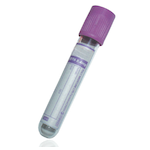Suitable Specimen Types
- EDTA Plasma
- Li Hep Plasma
Specimen Transport
First class postSample Processing in Laboratory
UsualSample Preparation
Centrifuge and store plasma at -20ºCTurnaround Time
2 weeksSample Stability
-20 ºCPhytanic Acid
General Information
Phytanic acid (or 3,7,11,15-tetramethyl hexadecanoic acid) is a branched chain fatty acid that humans can obtain through the consumption of dairy products, ruminant animal fats, and certain fish.
Unlike most fatty acids, phytanic acid cannot be metabolized by β-oxidation. Instead, it undergoes α-oxidation in the peroxisome, where it is converted into pristanic acid by the removal of one carbon. Pristanic acid can undergo several rounds of β-oxidation in the peroxisome to form medium chain fatty acids that can be converted to carbon dioxide and water in mitochondria. Individuals with adult Refsum disease, an autosomal recessive neurological disorder caused by mutations in the PHYH gene, have impaired α-oxidation activity and accumulate large stores of phytanic acid in their blood and tissues. This frequently leads to peripheral polyneuropathy, cerebellar ataxia, retinitis pigmentosa, anosmia, and hearing loss.
Patient Preparation
None
Notes
None Given
Reference Range
Provided by reference Lab
Specifications
- EQA Scheme?: No
- EQA Status: No Scheme available.
